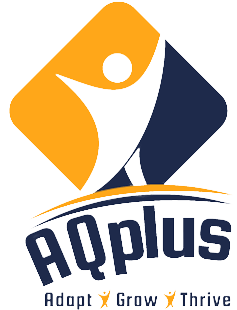In a world where innovation is the lifeblood of success, breaking the mold and challenging the status quo has become essential. Staying stagnant in the face of evolving markets and changing consumer demands can spell disaster for any business. But how do you push the boundaries and unleash your full potential?
In this article, we delve into the strategies and mindset needed to drive innovation and break free from the constraints of the ordinary. From encouraging a culture of creativity to fostering collaboration and embracing failure, we explore the key ingredients for success in a constantly evolving landscape.
By harnessing the power of innovation, organizations can differentiate themselves from the competition, captivate their target audience, and drive sustainable growth. So, whether you’re a seasoned executive leading a team or an aspiring entrepreneur looking to disrupt the market, join us as we uncover the secrets to breaking the mold and unleashing your innovation potential.
Together, let’s challenge the status quo and pave the way for a future filled with groundbreaking ideas and remarkable achievements.
Understanding the Status Quo and Its Impact on Innovation
The status quo refers to the existing state of affairs, the way things are currently done. It is a comfort zone that can often breed complacency and hinder progress. When organizations become too comfortable with the status quo, they risk falling behind their competitors and missing out on opportunities for growth.
To truly understand the impact of the status quo on innovation, it’s important to recognize that it is not just a set of rules or processes; it is a mindset. The status quo represents a fixed way of thinking, a resistance to change, and a fear of the unknown. It stifles creativity and limits the potential for breakthrough ideas.
The Importance of Challenging the Status Quo
Challenging the status quo is essential for driving innovation and staying ahead in today’s rapidly changing world. It is the catalyst for growth and the key to unlocking untapped potential. By questioning existing norms and pushing boundaries, organizations can discover new opportunities, create unique value propositions, and revolutionize their industries.
Innovation is not just about creating something new; it’s about finding better ways to solve problems and meet customer needs. By challenging the status quo, organizations can identify inefficiencies, uncover hidden pain points, and deliver transformative solutions. It allows them to differentiate themselves from the competition and position themselves as industry leaders.
Breaking Free from Conventional Thinking
Breaking free from conventional thinking is a crucial step in challenging the status quo and driving innovation. It requires a shift in mindset, a willingness to question assumptions, and a commitment to exploring new possibilities.
One of the first steps in breaking free from conventional thinking is to cultivate a culture of curiosity and open-mindedness. Encourage your team to ask questions, challenge assumptions, and explore alternative perspectives. Create an environment where ideas are welcomed, regardless of their source or initial feasibility.
Another key aspect of breaking free from conventional thinking is to embrace diversity. Surround yourself with people who bring different backgrounds, experiences, and perspectives to the table. Diversity breeds innovation by bringing together a range of ideas and insights that can lead to breakthrough solutions.
Embracing a Culture of Innovation
Creating a culture of innovation is vital for challenging the status quo and driving continuous improvement. It requires a commitment from top leadership to foster an environment that encourages creativity, experimentation, and risk-taking.
To establish a culture of innovation, leaders must first communicate a clear vision and purpose. Employees need to understand how their work contributes to the larger goals of the organization and why innovation is essential for long-term success. This clarity of purpose helps align everyone towards a common objective and creates a sense of urgency around innovation.
Leaders should also empower their teams by giving them the autonomy and resources they need to experiment and take calculated risks. Encourage employees to think outside the box, explore new ideas, and learn from failures. Celebrate both successes and failures, as they are both valuable learning opportunities that drive innovation.
Overcoming Resistance to Change
Resistance to change is one of the biggest barriers to challenging the status quo and driving innovation. People naturally tend to resist change because it disrupts their comfort zones and introduces uncertainty. However, overcoming this resistance is crucial for unlocking innovation and driving progress.
To overcome resistance to change, it’s important to communicate the benefits and rationale behind the proposed changes. Help employees understand why the status quo is no longer sustainable and how the proposed changes will lead to better outcomes. Provide support and resources to help them adapt to the new ways of doing things.
Another effective strategy is to involve employees in the change process. Seek their input, listen to their concerns, and involve them in decision-making. By involving employees, you not only address their concerns but also tap into their collective wisdom and creativity.
Examples of Successful Companies That Challenged the Status Quo
Numerous companies have successfully challenged the status quo and disrupted their industries. These examples serve as inspiration and provide valuable lessons for organizations looking to drive innovation.
One such example is Amazon. By challenging traditional brick-and-mortar retail models, Amazon revolutionized the way people shop and transformed the e-commerce industry. Through continuous innovation, they have expanded their offerings, improved customer experiences, and disrupted various sectors, from books to groceries.
Another notable example is Tesla. By challenging the status quo in the automotive industry, Tesla has become synonymous with electric vehicles and renewable energy. Their innovative approach to design, technology, and sustainability has propelled them to the forefront of the industry and inspired other automakers to follow suit.
Tools and Resources for Fostering Innovation
Fostering innovation requires more than just a desire to challenge the status quo; it also requires the right tools and resources. Fortunately, there are numerous resources available to help organizations drive innovation and unleash their full potential.
One such resource is design thinking, a human-centered approach to problem-solving. Design thinking helps organizations empathize with their users, define problems, generate ideas, prototype solutions, and iterate based on user feedback. It provides a structured framework for innovation and encourages collaboration and creativity.
Another valuable tool for fostering innovation is the use of technology. Technology can automate processes, streamline operations, and provide new ways of delivering value to customers. From artificial intelligence to data analytics, organizations can leverage technology to gain insights, identify opportunities, and drive innovation.
Conclusion: Embracing a Mindset of Continuous Improvement
Innovation is not a one-time event but rather a mindset of continuous improvement. By challenging the status quo and embracing a culture of innovation, organizations can unlock their full potential and drive sustainable growth. Breaking free from conventional thinking, overcoming resistance to change, and leveraging the right tools and resources are all essential steps on the journey to innovation.
So, whether you’re a seasoned executive leading a team or an aspiring entrepreneur looking to disrupt the market, remember that innovation starts with you. Challenge the status quo, push boundaries, and embrace a mindset of continuous improvement. Together, let’s pave the way for a future filled with groundbreaking ideas and remarkable achievements.







